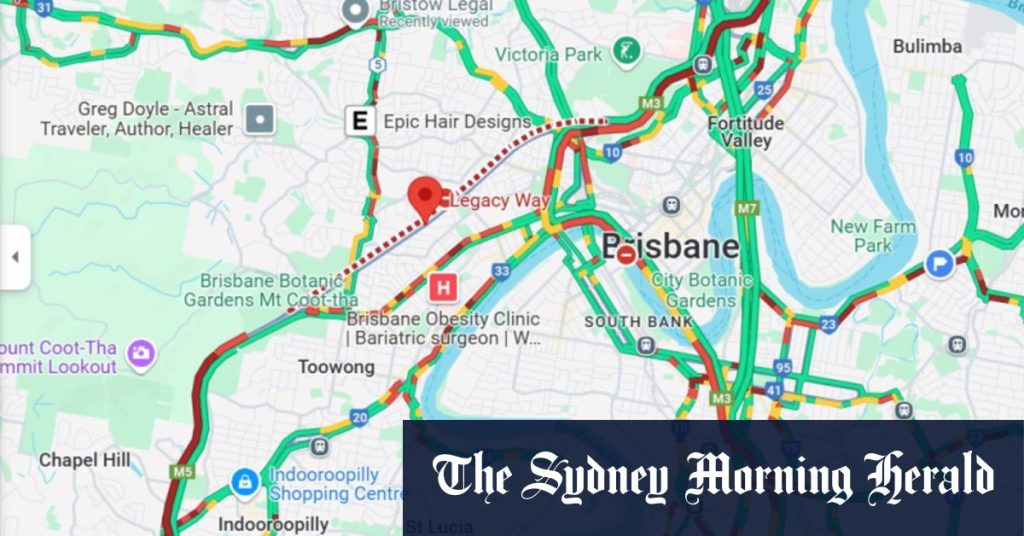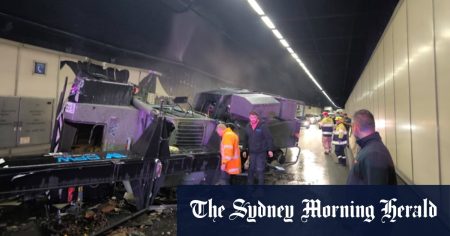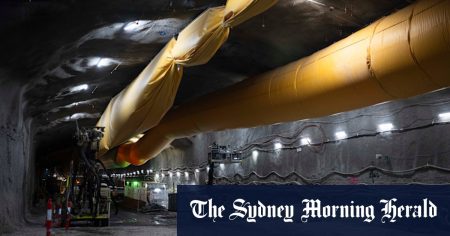The Wednesday morning commute in Brisbane, Australia, was significantly disrupted by an unexpected power outage that forced the closure of the Legacy Way Tunnel, a vital artery connecting Toowong in the city’s west to the Inner City Bypass at Kelvin Grove. The tunnel closure, which commenced around 6:00 am, triggered a cascade of traffic congestion throughout the city’s road network, impacting major thoroughfares and causing substantial delays for commuters. Transurban, the tunnel’s operator, attributed the shutdown to an incident at one of the Legacy Way substations which compromised the power supply to the tunnel. Emergency roadworks were immediately initiated to address the issue and restore functionality.
The ripple effects of the tunnel closure were extensive. Traffic rapidly built up on key routes, including the Western Freeway, where inbound commuters from Kenmore to Toowong experienced heavy delays. Congestion also plagued Bowen Hills leading into the city center, and Milton Road experienced sluggish inbound traffic in the Milton area. The closure of the Legacy Way Tunnel effectively choked a major traffic conduit, forcing a significantly increased volume of vehicles onto alternative routes, which were quickly overwhelmed by the surge in traffic.
While traffic began to ease in some areas as the morning progressed, the Legacy Way Tunnel remained closed until approximately 10:00 am. This extended closure underscored the severity of the power outage and the complexity of the required repairs. The gradual easing of congestion was less a reflection of improved traffic flow and more a consequence of the natural decline in commuting volume as the peak hour subsided. The lingering impact on major roads highlighted the city’s vulnerability to disruptions within its critical infrastructure and emphasized the crucial role the Legacy Way Tunnel plays in facilitating smooth traffic flow.
The incident highlights the interconnectedness of urban infrastructure and the potential for seemingly isolated incidents to generate widespread consequences. The power outage at the Legacy Way substation, while a localized event, had a far-reaching impact on Brisbane’s transportation network, demonstrating the vulnerability of modern cities to disruptions in essential services. The incident underscores the importance of robust infrastructure planning and maintenance, as well as the need for effective contingency plans to mitigate the impact of unexpected events on critical systems.
The extended closure of the Legacy Way Tunnel also brought to the fore the challenges of managing traffic flow in a densely populated urban environment. With a major artery suddenly unavailable, the existing road network struggled to accommodate the diverted traffic, leading to significant delays and highlighting the limited capacity of alternative routes to absorb increased traffic volume. This incident serves as a valuable case study for urban planners and traffic engineers, underscoring the need for flexible and resilient transportation systems capable of adapting to unforeseen circumstances.
Ultimately, the unexpected power failure and subsequent closure of the Legacy Way Tunnel served as a stark reminder of the delicate balance that sustains the smooth functioning of urban life. The incident revealed the interconnectedness of various infrastructure components, the cascading effects of disruptions to critical systems, and the challenges of managing traffic flow in a complex urban environment. It underscored the need for proactive measures to ensure the resilience of urban infrastructure, as well as the importance of effective communication and coordination to minimize the impact of unexpected events on the daily lives of commuters and the broader community.










